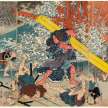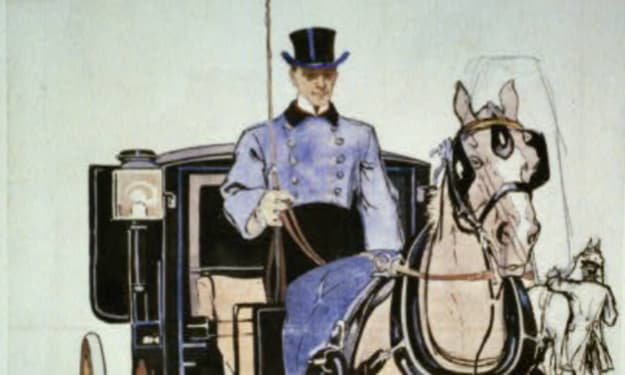
Old Japan: A Historical Overview
Old Japan, also known as the Edo period (1603-1868), holds a significant place in the history of Japan. This era witnessed immense political stability, cultural growth, and isolation from the outside world. In this document, we will explore the key aspects of Old Japan, including its social structure, governance, economy, arts, and everyday life.
The history of old Japan refers to the period of Japan's history before the country opened up to the outside world in the late 19th century. This period is commonly divided into several eras, each characterized by significant political, social, and cultural developments. Let's explore a brief overview of the history of old Japan:
Jomon Period (14,000 BCE - 300 BCE):
The Jomon period is named after the cord-marked pottery found in archaeological sites. During this time, Japan was inhabited by hunter-gatherer communities who lived in small villages and relied on fishing, hunting, and gathering for sustenance. It is the earliest known period of Japanese history.
Yayoi Period (300 BCE - 300 CE):
The Yayoi period marked the introduction of rice cultivation and metalworking to Japan. It is believed that migrants from the Asian continent brought these practices to the archipelago. Social stratification emerged during this era, with the establishment of agricultural communities and the emergence of powerful clans.
Kofun Period (300 - 538 CE):
The Kofun period is characterized by the construction of large burial mounds (kofun) for elite rulers and the spread of iron technology. This era saw the emergence of centralized political power and the establishment of a monarchy, with the Yamato clan at its center.
Asuka Period (538 - 710 CE):
The Asuka period saw the introduction of Buddhism and the adoption of Chinese cultural and political systems. The Japanese court sent emissaries to China to study its civilization, and Prince Shotoku, a prominent figure of this era, promulgated the Seventeen-Article Constitution, which emphasized Buddhism and Confucianism.
Nara Period (710 - 794 CE):
During the Nara period, Japan's capital was moved to Nara, and the country experienced the zenith of Chinese influence. Buddhism flourished, and the first permanent capital was established. The period is known for the creation of the Great Buddha statue in Nara and the compilation of Japan's first written historical chronicles, known as the Kojiki and Nihon Shoki.
Heian Period (794 - 1185 CE):
The Heian period is often considered the height of classical Japanese culture. The capital was moved to Kyoto (then called Heian-kyo), and the imperial court and aristocracy played significant roles. This era witnessed the development of literature, including works like "The Tale of Genji" by Lady Murasaki, as well as the rise of samurai warrior culture.
Kamakura Period (1185 - 1333 CE):
The Kamakura period marked the rise of the samurai class and the establishment of a military government known as the Kamakura Shogunate. The Mongol invasions in the 13th century, attempted twice but thwarted by natural disasters, posed a significant threat to Japan and demonstrated the country's resilience.
Muromachi Period (1336 - 1573 CE):
The Muromachi period witnessed the Ashikaga Shogunate's rule from its capital in Kyoto. It was a time of political instability, with the shogunate facing challenges from regional warlords and internal conflicts. This era is associated with the development of the tea ceremony, ink painting, and Noh theater.
Azuchi-Momoyama Period (1568 - 1603 CE):
This period marked the end of the Muromachi period and the emergence of a unified Japan under the leadership of powerful daimyo (feudal lords). Oda Nobunaga and Toyotomi Hideyoshi were prominent figures who sought to centralize power. The period ended with the establishment of the Tok
Social Structure:
During Old Japan, society was strictly divided into hierarchical classes. At the top of the social order were the samurai, who served as the military elite and held great influence. Below them were the peasants, who constituted the largest segment of the population. Artisans and merchants formed the next class, followed by the outcast class, which included individuals engaged in "unclean" professions. The status of individuals was generally determined by birth, and social mobility was limited.
Governance:
The political system of Old Japan was characterized by a centralized feudal system. The Tokugawa shogunate, led by the shogun, held the highest authority. The shogunate enforced strict control over the daimyo, regional lords who governed their respective territories. This system aimed to maintain stability and prevent internal conflict. However, it also led to the isolationist policy known as Sakoku, which limited foreign interactions.
Economy:
Agriculture formed the backbone of the Old Japanese economy, with rice being the primary crop. The government implemented land redistribution policies to maintain control over the samurai class. Alongside agriculture, urban areas flourished with the growth of merchant activities and the establishment of trade guilds. The emergence of a consumer culture fueled the demand for various goods, leading to economic growth.
Arts and Culture:
Old Japan witnessed significant advancements in arts and culture. Traditional forms such as Noh and Kabuki theater, Haiku poetry, and tea ceremonies thrived during this period. Woodblock printing, known as ukiyo-e, gained popularity and depicted scenes from daily life, landscapes, and famous personalities. The development of the Edo period also saw the rise of renowned artists, including Hokusai and Hiroshige.
Everyday Life:
In Old Japan, the daily lives of people varied based on their social class. Samurai adhered to a strict code of conduct called Bushido, emphasizing loyalty, honor, and self-discipline. Peasants dedicated their lives to agricultural work, while artisans and merchants engaged in urban commerce. People enjoyed various forms of entertainment, such as festivals, games, and storytelling. Traditional clothing, such as the kimono, was widely worn during this period.
Conclusion:
Old Japan, or the Edo period, left a lasting impact on the cultural and historical identity of Japan. Despite its isolationist policies, the era witnessed significant internal developments and cultural achievements. Exploring the social structure, governance, economy, arts, and everyday life of Old Japan provides a glimpse into a fascinating period of Japanese history, marking the foundation of the country's modernization in subsequent eras.
About the Creator
not japaness
im good how are you
Enjoyed the story? Support the Creator.
Subscribe for free to receive all their stories in your feed. You could also pledge your support or give them a one-off tip, letting them know you appreciate their work.






Comments
There are no comments for this story
Be the first to respond and start the conversation.